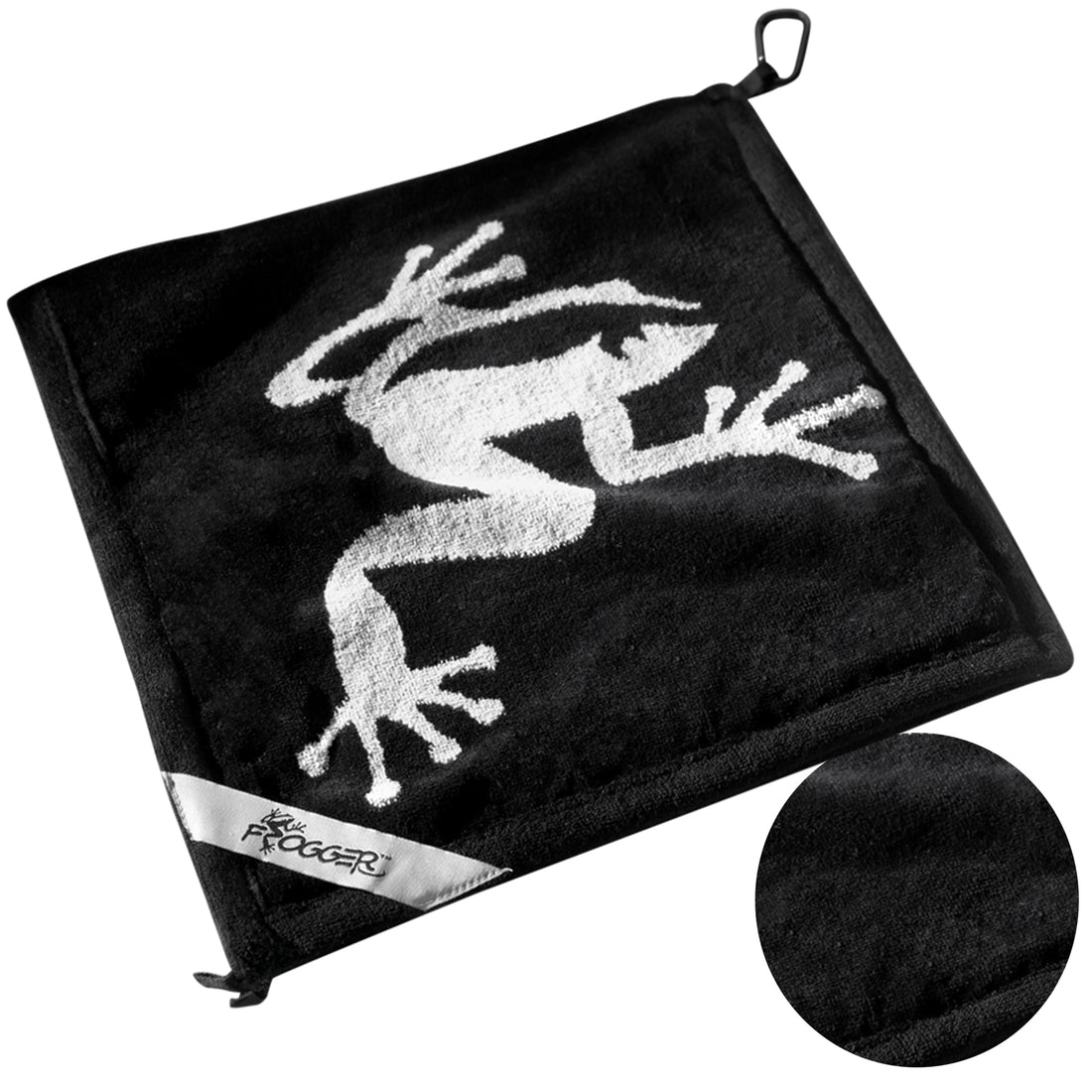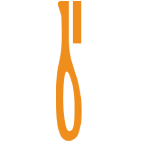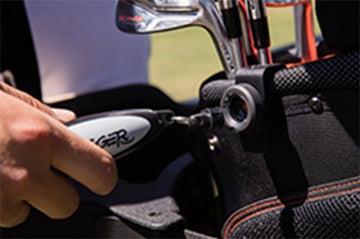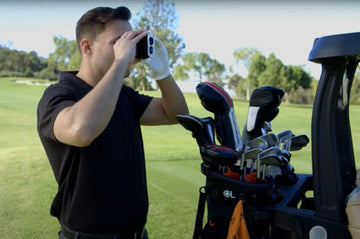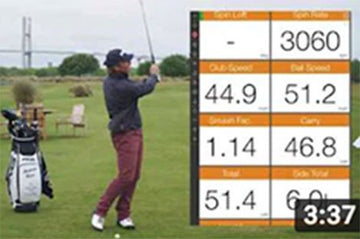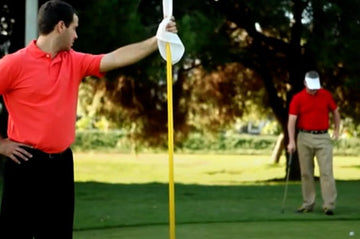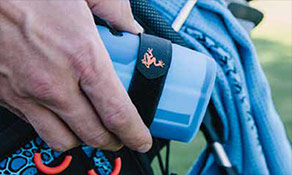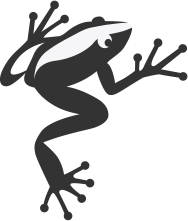Golf Tips: Finding a Lost Ball
by
Jeremiah Bohannon
on
Nov 04, 2013

We’ve all had it happen. We arrive at the location where our golf ball should be and what’s there? Nada. Nothing. Zilch. Zip. We then aimlessly wander around looking for that white spheriod. Our playing partners join in too. Often times we run into each other or cross paths.
Methodical Search
Take a ball search tip from watching a really good caddie. They don’t just wander around, searching randomly, often crossing the same spot over and over again. They do a methodical search within a specific area which covers the entire area.
Distance vs. Spread
When we saw the ball last, we had a good idea where it was within probably 10-15 yards left or right. So the line isn’t the issue. What is most difficult to calculate is the distance.
Most caddies will choose a distance range, then search that range based on a depth of distance and the width of the line.
Let’s say you hit driver off the tee and your normal drive usually goes 260-270 yards. If we take an area which varies say 15-20 yards long or short, we would then be searching an area from about 250 yards to 290 yards. The width of the area will be 15 yards wide.
So we make an imaginary rectangle on the ground which is 40 yards deep and 30 yards wide. That’s the search area. Rather than wandering around the search area, we walk the length of the search area from front to back, starting on one side. Just like we are mowing the lawn at home, we turn and move a few feet to the side and go back from the back to the front. We cover the whole area like this, therefore covering practically every square inch.
At the end of the search, which is probably going to be our allotted five minutes for a ball search under rule 27-1 of the USGA rules, we then declare it lost and proceed on with our game.
Hopefully though, that methodical and detailed ball search results in finding the ball, and saving strokes.
 We’ve all had it happen. We arrive at the location where our golf ball should be and what’s there? Nada. Nothing. Zilch. Zip. We then aimlessly wander around looking for that white spheriod. Our playing partners join in too. Often times we run into each other or cross paths.
Methodical Search
Take a ball search tip from watching a really good caddie. They don’t just wander around, searching randomly, often crossing the same spot over and over again. They do a methodical search within a specific area which covers the entire area.
Distance vs. Spread
When we saw the ball last, we had a good idea where it was within probably 10-15 yards left or right. So the line isn’t the issue. What is most difficult to calculate is the distance.
Most caddies will choose a distance range, then search that range based on a depth of distance and the width of the line.
Let’s say you hit driver off the tee and your normal drive usually goes 260-270 yards. If we take an area which varies say 15-20 yards long or short, we would then be searching an area from about 250 yards to 290 yards. The width of the area will be 15 yards wide.
So we make an imaginary rectangle on the ground which is 40 yards deep and 30 yards wide. That’s the search area. Rather than wandering around the search area, we walk the length of the search area from front to back, starting on one side. Just like we are mowing the lawn at home, we turn and move a few feet to the side and go back from the back to the front. We cover the whole area like this, therefore covering practically every square inch.
At the end of the search, which is probably going to be our allotted five minutes for a ball search under rule 27-1 of the USGA rules, we then declare it lost and proceed on with our game.
Hopefully though, that methodical and detailed ball search results in finding the ball, and saving strokes.
We’ve all had it happen. We arrive at the location where our golf ball should be and what’s there? Nada. Nothing. Zilch. Zip. We then aimlessly wander around looking for that white spheriod. Our playing partners join in too. Often times we run into each other or cross paths.
Methodical Search
Take a ball search tip from watching a really good caddie. They don’t just wander around, searching randomly, often crossing the same spot over and over again. They do a methodical search within a specific area which covers the entire area.
Distance vs. Spread
When we saw the ball last, we had a good idea where it was within probably 10-15 yards left or right. So the line isn’t the issue. What is most difficult to calculate is the distance.
Most caddies will choose a distance range, then search that range based on a depth of distance and the width of the line.
Let’s say you hit driver off the tee and your normal drive usually goes 260-270 yards. If we take an area which varies say 15-20 yards long or short, we would then be searching an area from about 250 yards to 290 yards. The width of the area will be 15 yards wide.
So we make an imaginary rectangle on the ground which is 40 yards deep and 30 yards wide. That’s the search area. Rather than wandering around the search area, we walk the length of the search area from front to back, starting on one side. Just like we are mowing the lawn at home, we turn and move a few feet to the side and go back from the back to the front. We cover the whole area like this, therefore covering practically every square inch.
At the end of the search, which is probably going to be our allotted five minutes for a ball search under rule 27-1 of the USGA rules, we then declare it lost and proceed on with our game.
Hopefully though, that methodical and detailed ball search results in finding the ball, and saving strokes.
 We’ve all had it happen. We arrive at the location where our golf ball should be and what’s there? Nada. Nothing. Zilch. Zip. We then aimlessly wander around looking for that white spheriod. Our playing partners join in too. Often times we run into each other or cross paths.
Methodical Search
Take a ball search tip from watching a really good caddie. They don’t just wander around, searching randomly, often crossing the same spot over and over again. They do a methodical search within a specific area which covers the entire area.
Distance vs. Spread
When we saw the ball last, we had a good idea where it was within probably 10-15 yards left or right. So the line isn’t the issue. What is most difficult to calculate is the distance.
Most caddies will choose a distance range, then search that range based on a depth of distance and the width of the line.
Let’s say you hit driver off the tee and your normal drive usually goes 260-270 yards. If we take an area which varies say 15-20 yards long or short, we would then be searching an area from about 250 yards to 290 yards. The width of the area will be 15 yards wide.
So we make an imaginary rectangle on the ground which is 40 yards deep and 30 yards wide. That’s the search area. Rather than wandering around the search area, we walk the length of the search area from front to back, starting on one side. Just like we are mowing the lawn at home, we turn and move a few feet to the side and go back from the back to the front. We cover the whole area like this, therefore covering practically every square inch.
At the end of the search, which is probably going to be our allotted five minutes for a ball search under rule 27-1 of the USGA rules, we then declare it lost and proceed on with our game.
Hopefully though, that methodical and detailed ball search results in finding the ball, and saving strokes.
We’ve all had it happen. We arrive at the location where our golf ball should be and what’s there? Nada. Nothing. Zilch. Zip. We then aimlessly wander around looking for that white spheriod. Our playing partners join in too. Often times we run into each other or cross paths.
Methodical Search
Take a ball search tip from watching a really good caddie. They don’t just wander around, searching randomly, often crossing the same spot over and over again. They do a methodical search within a specific area which covers the entire area.
Distance vs. Spread
When we saw the ball last, we had a good idea where it was within probably 10-15 yards left or right. So the line isn’t the issue. What is most difficult to calculate is the distance.
Most caddies will choose a distance range, then search that range based on a depth of distance and the width of the line.
Let’s say you hit driver off the tee and your normal drive usually goes 260-270 yards. If we take an area which varies say 15-20 yards long or short, we would then be searching an area from about 250 yards to 290 yards. The width of the area will be 15 yards wide.
So we make an imaginary rectangle on the ground which is 40 yards deep and 30 yards wide. That’s the search area. Rather than wandering around the search area, we walk the length of the search area from front to back, starting on one side. Just like we are mowing the lawn at home, we turn and move a few feet to the side and go back from the back to the front. We cover the whole area like this, therefore covering practically every square inch.
At the end of the search, which is probably going to be our allotted five minutes for a ball search under rule 27-1 of the USGA rules, we then declare it lost and proceed on with our game.
Hopefully though, that methodical and detailed ball search results in finding the ball, and saving strokes.

